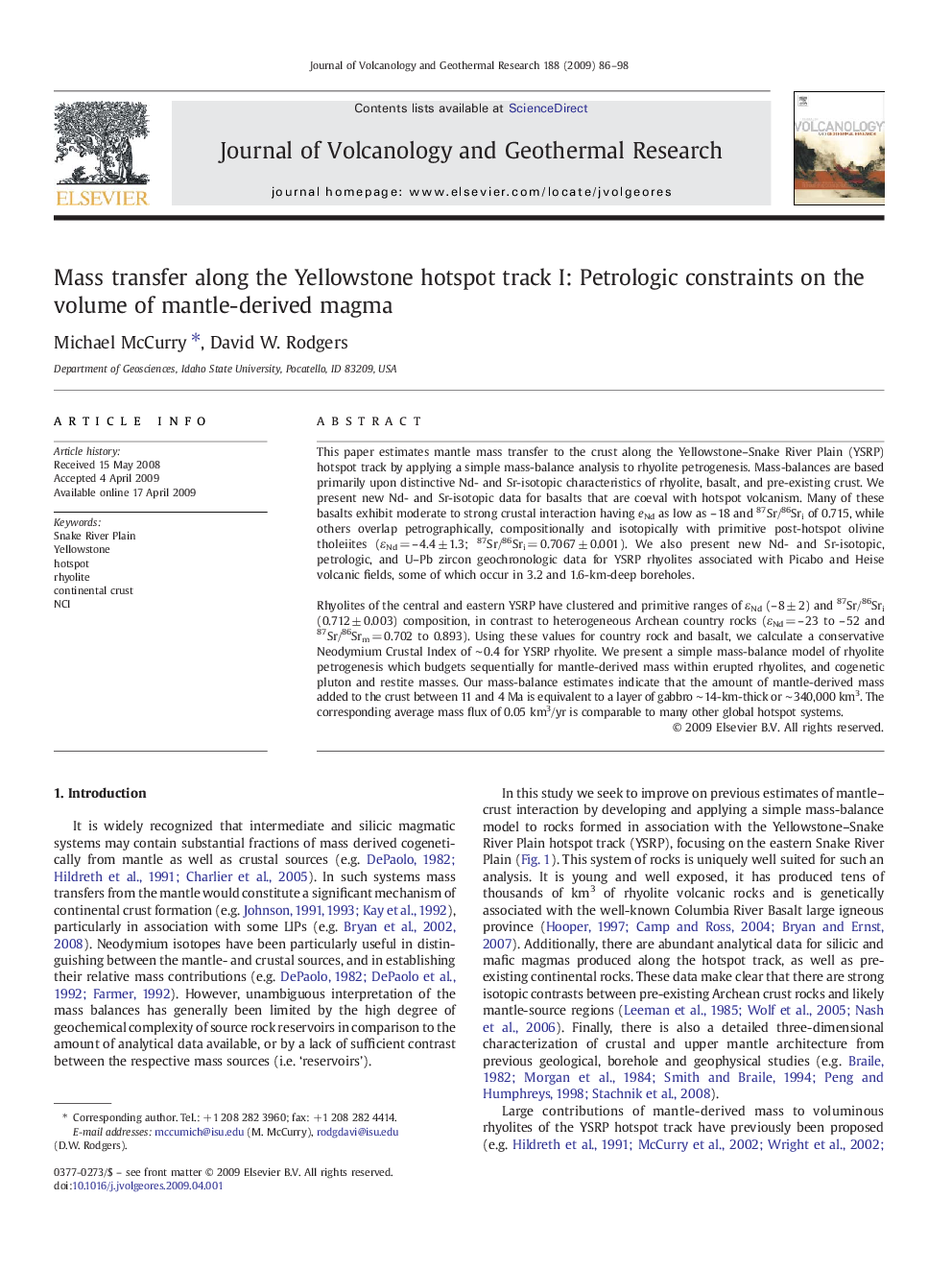| Article ID | Journal | Published Year | Pages | File Type |
|---|---|---|---|---|
| 4713171 | Journal of Volcanology and Geothermal Research | 2009 | 13 Pages |
This paper estimates mantle mass transfer to the crust along the Yellowstone–Snake River Plain (YSRP) hotspot track by applying a simple mass-balance analysis to rhyolite petrogenesis. Mass-balances are based primarily upon distinctive Nd- and Sr-isotopic characteristics of rhyolite, basalt, and pre-existing crust. We present new Nd- and Sr-isotopic data for basalts that are coeval with hotspot volcanism. Many of these basalts exhibit moderate to strong crustal interaction having eNd as low as – 18 and 87Sr/86Sri of 0.715, while others overlap petrographically, compositionally and isotopically with primitive post-hotspot olivine tholeiites (εNd = – 4.4 ± 1.3; 87Sr/86Sri = 0.7067 ± 0.001). We also present new Nd- and Sr-isotopic, petrologic, and U–Pb zircon geochronologic data for YSRP rhyolites associated with Picabo and Heise volcanic fields, some of which occur in 3.2 and 1.6-km-deep boreholes.Rhyolites of the central and eastern YSRP have clustered and primitive ranges of εNd (– 8 ± 2) and 87Sr/86Sri (0.712 ± 0.003) composition, in contrast to heterogeneous Archean country rocks (εNd = – 23 to – 52 and 87Sr/86Srm = 0.702 to 0.893). Using these values for country rock and basalt, we calculate a conservative Neodymium Crustal Index of ∼ 0.4 for YSRP rhyolite. We present a simple mass-balance model of rhyolite petrogenesis which budgets sequentially for mantle-derived mass within erupted rhyolites, and cogenetic pluton and restite masses. Our mass-balance estimates indicate that the amount of mantle-derived mass added to the crust between 11 and 4 Ma is equivalent to a layer of gabbro ∼ 14-km-thick or ∼ 340,000 km3. The corresponding average mass flux of 0.05 km3/yr is comparable to many other global hotspot systems.
